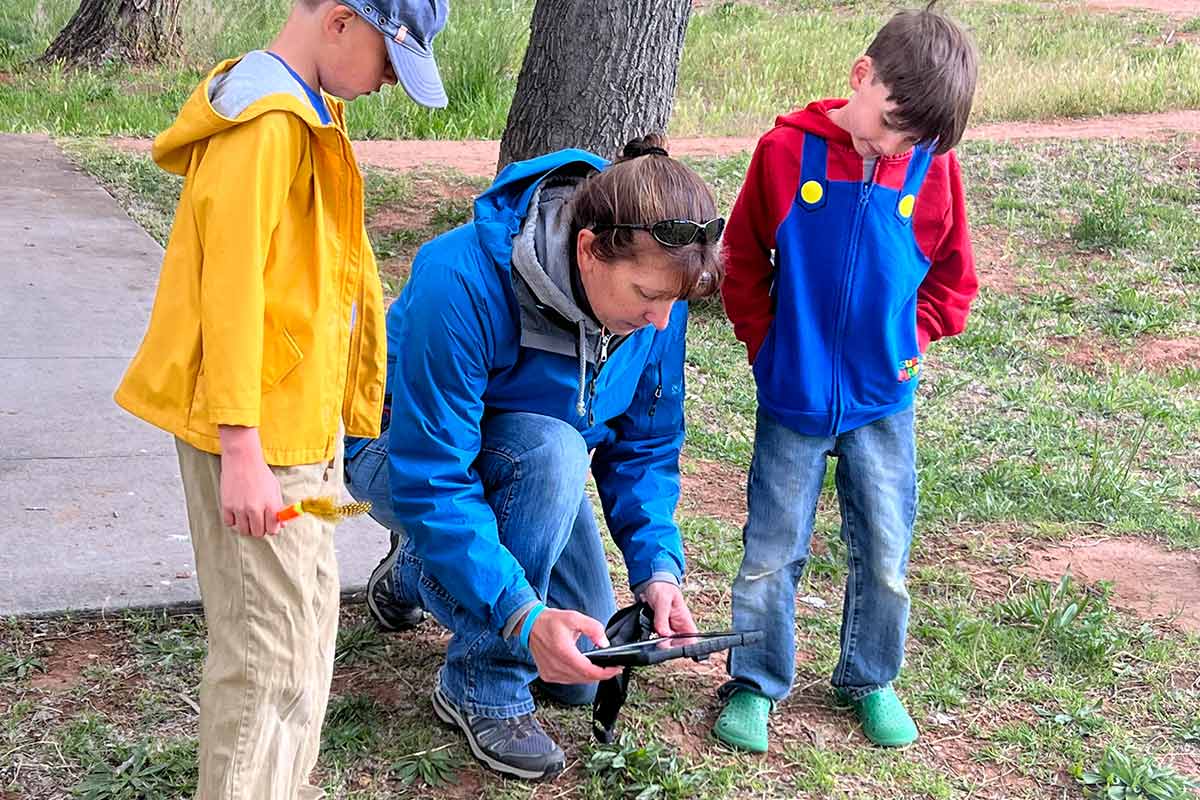Learn
Hands-on research connects classrooms with local conservation efforts
The Cottonwood School District has partnered with Friends of the Verde River to launch an exciting new educational initiative: the Verde Watershed Fellowship Research Project. This program offers students a unique opportunity to engage in hands-on, real-world science while helping protect one of Arizona’s most important natural resources—the Verde River.
Through this partnership, students investigate water quality, pollution, and the ecological health of the watershed using the tools and techniques of professional scientists. Guided by their teachers and supported by the expertise of Friends of the Verde River, students learn how to collect data, analyze findings, and suggest solutions to real environmental challenges. The project not only strengthens science education in the district but also builds a strong foundation for community-based conservation.
“Being a Verde Watershed Fellow has been such a meaningful opportunity for me as a science teacher!” says Stephanie Graeber, a fellow 6th grade teacher in the program. “I have the privilege of working with experts in science fields to help bring real-world science to my students.”
One major element of the program focuses on trash mapping—where students survey areas around the river for litter and analyze what they find. As they work, they consider the types of trash they encounter and think critically about where it might come from. Some items may be left behind by people recreating along the river, while others might have been carried in by wind or water from upstream. Students reflect on the impacts of this pollution, including how it affects animals, plant life, and overall river health.
As part of this exploration, students begin to see patterns—some locations collect more trash than others, and certain items appear again and again. These patterns prompt discussions about pollution sources and inspire students to come up with solutions. Some propose creating public awareness campaigns or educational signage, while others suggest organizing cleanup days or addressing specific causes of litter. As their understanding deepens, students often become interested in related issues such as microplastics and how tiny pieces of plastic can enter water systems and harm aquatic life.
Another important component of the project involves monitoring the Verde River near The Farm at Bent River, a site that uses both flood and groundwater irrigation to support crops and livestock. This area provides a valuable real-world setting for students to explore how agricultural practices may impact water quality.
To carry out their investigations, students conduct tests above and below the farm to compare the river’s condition in both areas. Using tools like turbidity tubes and dissolved oxygen meters, they gather data on temperature, clarity, pH levels, and nutrient content. Their work helps identify any differences and leads to thoughtful consideration of how runoff, erosion, or other land-use practices may be affecting the river. They share their findings with Friends of the Verde River and with farm staff, opening the door for meaningful conversations and community-based solutions.
“I enjoy the process of working alongside and collaborating with scientists from FVR and other science educators from my school district,” says Rich Dambrov, a teacher at Verde Trails. “I feel confident that the science I am doing with my students is accurate and has real-world connections to interacting with our local watershed and by contributing to water quality data sets across the state. I also appreciate being able to bounce ideas off of my fellow educators and learn about the projects they are designing.”
In Cornville, students at Oak Creek School are engaged in a yearlong study of Oak Creek, with a focus on the riparian area at Mormon’s Crossing. The 5th-grade class explores what makes a creek healthy and how people can help protect these environments. Beginning with basic questions about creek health, students shape their research by observing and testing elements such as biodiversity, seasonal changes, and water quality.
Throughout the school year, the class performs age-appropriate tests to measure the creek’s condition. They may test for E. coli, dissolved oxygen, water clarity, and temperature. They observe the plant and animal life along the banks, track changes over time, and explore how human activity might be influencing the area. These investigations not only reinforce science skills but also foster a sense of care and responsibility for their local ecosystem.
“I treasure the opportunity to work with local scientists to create opportunities for students to authentically interact, test, and impact the essential waterways in our community,” reflects Lisa Clemson, a 5th grade educator participating in the fellowship.
Alongside the Verde Watershed Fellowship Research Project, the school district is expanding its 5th-grade Bio Blitz program. Traditionally, the Bio Blitz has allowed students to explore biodiversity by identifying as many plant and animal species as possible during a field outing. Now, the program includes additional classroom support, with lesson plans designed to help students dive deeper into the issue of invasive species.
Before heading into the field, students conduct research to better understand what invasive species are and how they impact ecosystems. After the trip, they analyze their findings and compare data to past years, helping them observe how local biodiversity is changing over time. This expansion adds an extra layer of scientific thinking and encourages long-term environmental awareness.
“I’m grateful for the opportunity to learn new water-testing techniques and community science opportunities that I can share with Science Vortex children and families,” says Laurie Altringer, an 8th grade teacher in the fellowship. “My project focuses on creating lessons that 5th grade teachers can use both before and after our annual Verde Bioblitz with their students. I’ve enjoyed collaborating with other teachers and FVR scientists—it has certainly been inspiring!”
Together, these projects are giving students across the district the tools and confidence to explore, ask questions, and advocate for their environment. They learn how biology and chemistry connect with real-life issues, and how science can be used to make a positive difference. They also gain exposure to sustainable practices such as regenerative agriculture, which supports biodiversity and helps protect water resources.
By presenting their research to Friends of the Verde River, farm managers, and school staff, students are stepping into leadership roles and contributing meaningfully to conservation efforts. These experiences go far beyond the classroom. They are building scientific knowledge, civic pride, and a lasting connection to the natural world.
Through the Verde Watershed Fellowship and the expanded Bio Blitz, students aren’t just learning about science—they’re becoming environmental stewards of the Verde River and beyond.






